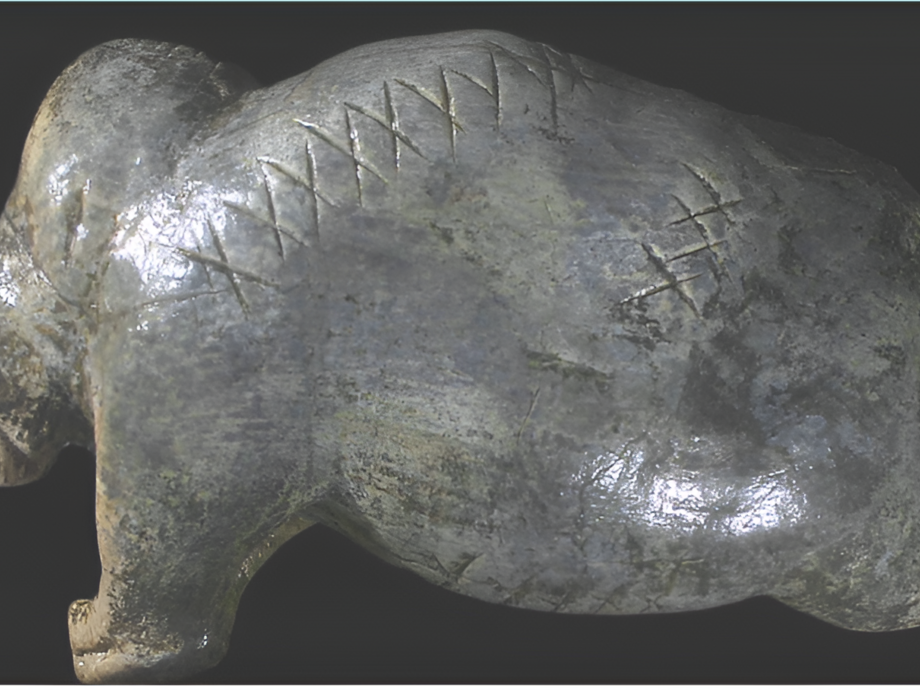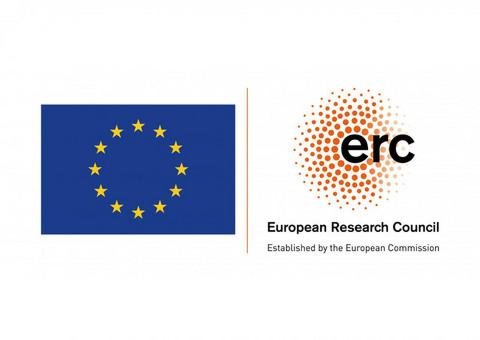
In the ERC project EVINE at the University of Passau, linguist Dr Christian Bentz is using methods from computational linguistics to investigate signs that were created before the invention of writing.
Humans have the ability to store and pass on information outside their minds. The acquisition of this ability is a milestone in human evolution. It is reflected in the use of symbols and written language and is the basis for artificial computing systems in the modern age. The first traces of this “externalization” of information can be traced back to the Palaeolithic period around 400,000 to 11,000 years ago.
This is where the project “The Evolution of Visual Information Encoding” (EVINE), led by Dr Christian Bentz, comes in. Together with archaeologist Dr Ewa Dutkiewicz at the Museum für Vor- und Frühgeschichte, Staatliche Museen zu Berlin, he investigates statistical properties of palaeolithic signs. The assumption is that an important component of the human language ability, symbolic combinatoriality, has already developed in the paleolithic. The ERC Starting Grant EVINE investigates the traces of this ability in the archaeological record.
Back to the Paleolithic Age 50,000 years ago. At that time, early humans set off on their journey from Africa into the rest of the world. On their way, they left behind many different artifacts. Some of them bear traces of visual information coding: geometric signs. Current analyses of individual artefacts from experimental archaeology show that these are very probably early forms of so-called “mnemonic techniques”, i.e. visualized memory aids.
Accumulation of sign systems in the Upper Paleolithic
A systematic accumulation of such artifacts appears in Europe for the first time with the arrival of modern humans. “The archaeological literature indicates that the sign systems became increasingly more complex over the course of the Upper Paleolithic, i.e. from around 43,000 to 11,000 BC,” says Dr Bentz. “However, how these changes in complexity are to be interpreted remains an open research question.”
Dr. Bentz and his team have set out to tackle this question with the help of computer-aided methods. To this end, the researchers are recording relevant archaeological finds in a database. Building on this, they are using methods from computational linguistics to shed light on the transitions in information coding.
In other words, they use measures from information theory and quantitative linguistics, as well as classification algorithms, which they apply to paleolithic signs, early cuneiform texts and modern writing. “This approach will shed new light on the question of how visual information coding evolved from the earliest signs to writing,” says Dr Bentz.
About the researcher
Linguist Dr Christian Bentz is an Assistant Professor (“Akademischer Rat”) at the Chair for Multilingual Computational Linguistics at the University of Passau since April 2024. He received the prestigious ERC Starting Grant from the European Research Council for his EVINE project while still at the University of Tübingen, where he was employed between 2016 and 2024.
The European Research Council (ERC) is a science-led institution set up by the European Commission to fund excellent scientists with ground-breaking research projects. The research group led by Dr. Bentz at the University of Passau will be funded with 1.5 million euros over a period of 5 years.
| Principal Investigator(s) at the University | Dr. Christian Bentz (Lehrstuhl für Multilinguale Computerlinguistik) |
|---|---|
| Project period | 01.01.2024 - 31.12.2028 |
| Website | https://www.erc-evine.de/index.html |
| Source of funding |

Europäische Union (EU) > EU - 9. Forschungsrahmenprogramm (Horizon Europe) > EU - Horizon Europe - ERC - Starting Grant
|
| Förderhinweis |
“Funded by the European Union (ERC, EVINE, 101117111). Views and opinions expressed are however those of the author(s) only and do not necessarily reflect those of the European Union or the European Research Council Executive Agency. Neither the European Union nor the granting authority can be held responsible for them.” |